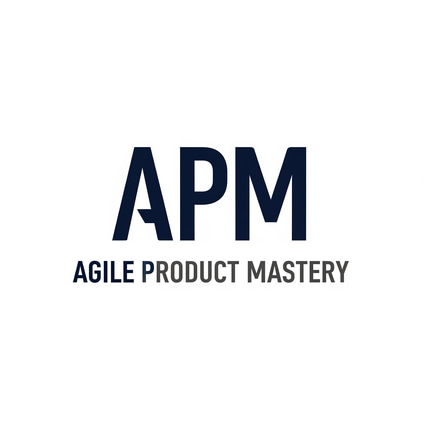The Rise of AI-Powered Backlog & Roadmap Management: What Product Owners Need to Know in 2025
Discover how AI is transforming Agile backlog and roadmap management in 2025. Learn how Product Owners can harness AI tools to streamline prioritization, boost productivity, and deliver customer-centric products faster.
AGILE PRODUCT MANAGEMENTARTIFICIAL INTELLIGENCEAI IN AGILEAI TOOLS
Written by: Matt Gregory - Founder Agile Product Mastery
5/22/20254 min read


In 2025, artificial intelligence isn’t just knocking at the door of product management—it’s moved in, taken a seat at the prioritization table, and started offering backlog grooming suggestions.
For Agile Product Owners (POs), this marks a profound shift in how we manage product delivery. We’re entering a world where AI can enhance everything from roadmap planning and prioritization to user story generation and sprint retrospectives. The role of the PO is evolving—fast—and those who adapt will gain an undeniable edge in delivering faster, smarter, and more customer-centric products.
So, what does this trend actually look like in practice? And how can you ride the wave instead of being overwhelmed by it?
Let’s break it down.
What is AI-Powered Backlog & Roadmap Management?
Put simply, this refers to the integration of artificial intelligence—particularly machine learning (ML) and natural language processing (NLP)—into the tools and processes we use to manage product development workflows.
Key capabilities now embedded in top tools like Jira, Linear, Aha!, Craft.io, and ClickUp include:
Auto-generating user stories from feedback
Grooming the backlog by detecting duplicates or outdated items
Suggesting prioritization based on business impact, effort, or usage data
Creating roadmap forecasts with real-time input from team velocity
Summarizing qualitative user feedback into actionable insights
These tools act as co-pilots, reducing administrative overhead while enhancing strategic decision-making.
Why Is This Trend Taking Off Now?
Several factors have converged to make 2025 a tipping point:
Explosion of Data: POs are overwhelmed with feedback from support, sales, reviews, analytics, and usage metrics. AI helps make sense of it all—at scale.
Tool Maturity: Modern product tools are now built with AI/ML capabilities natively integrated, not just bolted on as gimmicks.
Remote & Async Work: As distributed teams become the norm, AI fills the gaps in communication, context, and documentation.
Focus on Speed & Outcomes: AI can accelerate backlog grooming, roadmap planning, and sprint prep—freeing up the PO to focus on value, not just tasks.
How Are Leading Product Owners Using AI Today?
Let’s look at some real-world ways Product Owners are embedding AI into their daily practices:
1. Smart Backlog Grooming
Instead of manually reviewing hundreds of tickets, AI tools now:
Suggest similar or duplicate tickets
Highlight low-value or stale backlog items
Recommend grouping related items into themes or epics
PO Benefit: Less clutter, clearer focus areas, and a cleaner backlog that stays aligned with product strategy.
2. User Story Generation from Feedback
Tools like Dovetail and Productboard use NLP to parse through customer feedback and auto-suggest:
Potential user stories
Feature requests linked to pain points
Trend-based insights from NPS or support data
PO Benefit: Faster connection between customer voice and product decisions—without combing through pages of comments.
3. AI-Powered Prioritization
Modern platforms now provide data-driven prioritization based on:
Predicted business impact
Technical complexity (linked to historical dev effort)
Usage patterns and feature adoption rates
Some tools even suggest ICE or RICE scores automatically.
PO Benefit: Make more objective, data-informed decisions—especially helpful when balancing stakeholder opinions.
4. Predictive Roadmapping
AI forecasts likely delivery dates based on:
Team velocity
Scope creep trends
Historical burn rates
You get living roadmaps that update dynamically as inputs change.
PO Benefit: Set more realistic expectations with stakeholders and reduce last-minute surprises.
5. Sentiment & Trend Analysis
Customer feedback from surveys, reviews, and support chats is now automatically summarized into:
Themes (e.g. “frustration with onboarding”)
Sentiment scores
Emerging pain points or unmet needs
PO Benefit: See the forest and the trees—without becoming a data analyst.
What AI Can’t (Yet) Replace
Before we hand over the product reins to our AI co-pilots, it’s crucial to remember:
AI is great at summarizing, clustering, and suggesting.
But it lacks context, nuance, and strategic intent.
It can’t:
Understand market timing or internal politics
Weigh trade-offs in a nuanced stakeholder conversation
Create visionary leaps from disjointed data points
That’s your job.
The AI handles the noise. You handle the narrative.
Getting Started: A PO’s AI Adoption Checklist
If you’re ready to explore AI-powered product ownership, here’s how to start:
Step 1: Audit Your Toolset
Does your current platform (e.g., Jira, Aha!, Linear) offer AI features?
Explore plug-ins or integrations that bring in NLP or ML capabilities.
Step 2: Start with Low-Risk Use Cases
Let AI help groom old backlog items or summarize customer feedback.
Use it to generate draft stories or suggest priorities—then review manually.
Step 3: Pilot and Pair
Test AI outputs with your team.
Compare its suggestions to your own. You’ll sharpen your intuition while learning its strengths and blind spots.
Step 4: Maintain Human Oversight
Treat AI like a smart intern—not a replacement for your judgment.
Stay in control of vision, prioritization rationale, and stakeholder alignment.
What’s Next? The Future of AI-Driven Product Ownership
Looking ahead, we expect to see:
Voice interfaces for backlog management (think “Hey Jira, show me what features are delayed due to dependencies.”)
Cross-system synthesis, pulling insights from support, usage, market data, and engineering tools in real-time
Custom AI agents trained on your team’s tone, patterns, and delivery rhythm
Ultimately, the Product Owner role is becoming more strategic, insight-driven, and facilitative. AI will handle the grunt work; you’ll steer the ship.
Final Thoughts: Don’t Fear the Tech—Lead It
AI won’t replace Product Owners. But POs who don’t use AI might get replaced by those who do.
The most valuable POs in 2025 are those who:
Partner with AI to amplify their impact
Translate data into decisions
Combine human intuition with machine precision
This is your moment to lead the charge—not just as a backlog manager, but as a value-driven, insight-led product strategist.
Let the AI sort the noise—you deliver the clarity.
Ready to master your Product Owner journey?
Grab your copy of Agile Product Mastery: The Product Owner's Playbook to Strategy, Execution & Influence and take your skills to the next level.
© Agile Product Mastery — Build a career that scales. Not one that burns out.
Powered by Baltimore Advisory Pty Ltd — ABN 97 678 312 475 — All rights reserved
Follow us on LinkedIn
